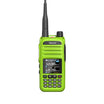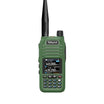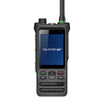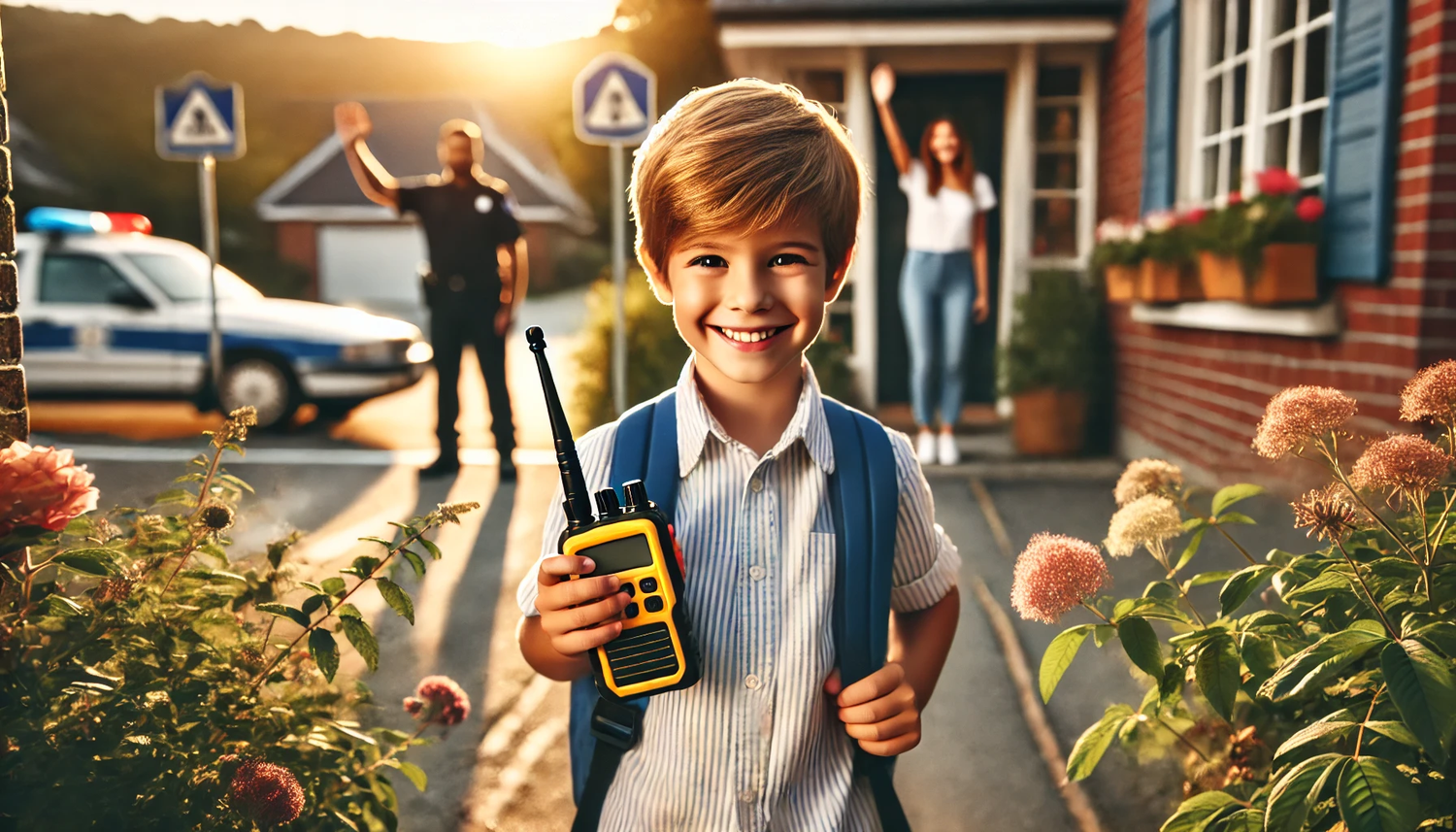Every parent wants their child to stay safe on the way to and from school. Whether it’s navigating busy streets, staying aware of their surroundings, or handling unexpected situations, the journey can sometimes be challenging. A simple tool like a walkie-talkie can act as an effective communication bridge between parents and children, making safety accessible and reassuring.
1. Common Challenges on the Way to School
Children face various challenges during their school commute:
• Getting lost: Especially when attending a new school or walking a new route for the first time.
• Handling emergencies: From sudden weather changes to an unfamiliar or unsafe encounter.
• Avoiding smartphone dependency: Parents may hesitate to give younger children a smartphone, fearing overuse or distractions.
A walkie-talkie provides a direct, reliable, and cost-effective alternative for staying connected.
2. How a Walkie-Talkie Enhances Safety
• Instant Communication: No dialing or waiting required—just press the button and talk.
• No Monthly Costs: Unlike smartphones, walkie-talkies have no recurring fees.
• Durable and Portable: Designed to withstand drops and bumps, walkie-talkies are perfect for kids’ use.
• Parental Reassurance: Knowing your child can contact you at any time adds peace of mind.
3. Choosing the Right Walkie-Talkie for Kids
When selecting a walkie-talkie for school use, consider the following:
• Range: Ensure it covers the entire route to school.
• Ease of Use: Simple controls and clear buttons for younger children.
• Safety Features: Some models come with location tracking for added security.
• Fun Design: Bright colors or playful designs to encourage kids to use them.
4. Teaching Kids to Use Walkie-Talkies Safely
• Set Communication Rules: Establish check-in times, such as when they leave home, arrive at school, and return.
• Emergency Protocols: Teach kids to use the walkie-talkie to report emergencies, such as feeling unsafe or taking the wrong route.
• Practice Regularly: Run mock scenarios at home so kids are comfortable using the device.
5. Extra Safety Tips for the School Commute
• Walk in Groups: Encourage kids to commute with siblings, neighbors, or classmates.
• Know the Neighborhood: Familiarize them with safe zones like convenience stores or police stations.
• Bright Clothing: Reflective or brightly colored outfits improve visibility, especially during low-light hours.
A walkie-talkie is more than just a communication device—it’s a lifeline that connects parents and children in real-time, offering a sense of security for everyone involved. By incorporating this tool into your child’s daily routine, you can ensure a safer, more confident journey to school.
School Team Building Activities: How Walkie-Talkies Improve Collaboration
School team-building activities are essential for teaching students the value of collaboration, problem-solving, and leadership. Walkie-talkies can elevate these activities, offering an innovative way to enhance communication and coordination among students.
1. Why Are Walkie-Talkies Ideal for Team Building?
Team-building exercises often require clear communication across distances or during complex tasks. Walkie-talkies offer:
• Instant Communication: Students can relay information quickly and efficiently.
• Coordination Support: Teams can strategize, delegate tasks, and synchronize actions.
• Interactive Fun: The use of walkie-talkies makes activities feel like a real-life adventure or mission.
2. Creative Uses of Walkie-Talkies in Activities
• Treasure Hunts: Students work in groups to solve clues and communicate their findings via walkie-talkie.
• Obstacle Courses: Team members guide each other through obstacles using voice instructions.
• Role-Playing Adventures: Students pretend to be explorers or rescue teams, adding excitement to tasks.
• Emergency Drills: Simulate emergency scenarios where students use walkie-talkies to communicate and solve challenges.
3. What Students Learn from Walkie-Talkie Activities
• Teamwork: By dividing roles and responsibilities, students develop stronger collaborative skills.
• Communication: Walkie-talkies encourage clear, concise expression of ideas.
• Time Management: Timed tasks teach students to prioritize and make decisions efficiently.
• Leadership: Delegating tasks and guiding teammates fosters leadership abilities.
4. Tips for Teachers to Incorporate Walkie-Talkies
• Provide Clear Instructions: Teach students how to operate the walkie-talkies and establish proper communication protocols.
• Divide Groups Strategically: Ensure each group has at least one walkie-talkie operator.
• Conduct Practice Runs: Before the main activity, let students familiarize themselves with the device.
• Monitor Safety: Teachers can also use walkie-talkies to oversee student activity and provide guidance as needed.
Walkie-talkies not only facilitate communication but also add excitement and immersion to school team-building activities. By incorporating them into your school’s programs, students can enjoy memorable experiences while learning valuable life skills.











































Leave a comment
All comments are moderated before being published.
This site is protected by hCaptcha and the hCaptcha Privacy Policy and Terms of Service apply.